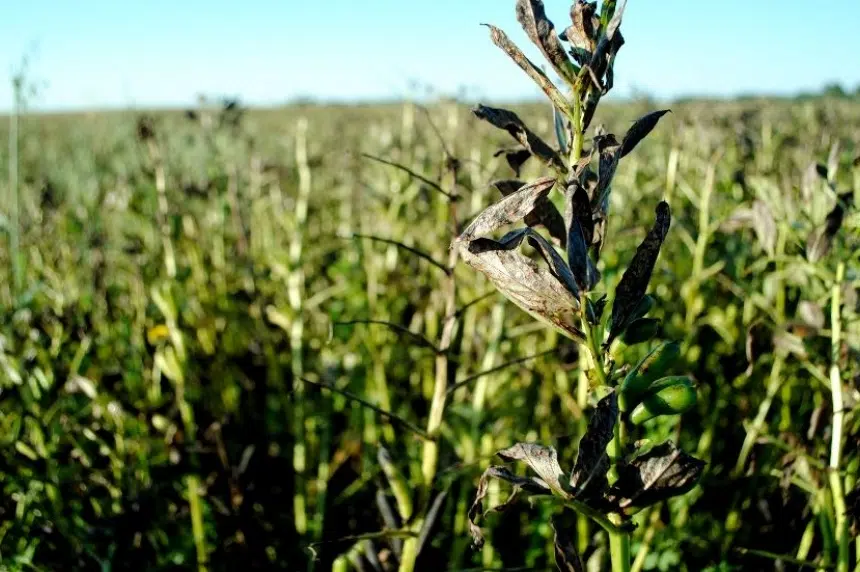Faba beans may be something you’ve never heard of but they seem to be taking the agriculture world by storm.
According to Agriculture Saskatchewan, the faba bean is an ancient small-seeded relative of the Chinese broadbean. The crop is commonly grown in the Mediterranean region where it’s common place at the dinner table.
Lately, grain producers in both Saskatchewan and Alberta have been trying it out.
Derryl Wawro, who farms east of Prince Albert, is amidst his third year growing faba beans. He said it’s been a great addition to his rotation.
“It gives you something to add to your rotation rather than just growing wheat and canola all the time,” said Wawro.
“It’s a legume-type crop so it replaces nitrogen in the soil for next year.”
“It’s a legume-type crop so it replaces nitrogen in the soil for next year”- Derryl Wawro
While they take very little fertilizer, basically none according to Wawro, they put back plenty of nutrients.
“The next year when you seed the following crop it really seems to produce well.”
Wawro said it’s important to have a variety of crops in rotation to prevent disease.
When sticking to simply wheat and canola, disease starts to be a reoccurring problem, and crops have to be sprayed. Thus, farmers are encouraged to grow a different crop than they did the previous year on each parcel of land. After growing canola, it’s recommended you wait three or four years to grow it again on that field.
Compared with peas who produce better in drier conditions, faba beans like lots of moisture.
“They did really well the last couple of years that I’ve had them, being that we had wet years,” Wawro said. “They produce really well. The more rain they get the more they like it.”
Even though this year has been drier than the last few, Wawro is optimistic and said the crop has handled the conditions well.
“They seem to look pretty good. They’re a little shorter than other years but they seem to still have a lot of pods,” he said.
Last year, he estimated the stalks were about five feet tall. This year they are three and four feet tall.
The good news is that the crop develops later so Wawro is expecting them to grow and keep on producing pods.
Taking the grain to market has been fairly easy.
“I’ve been selling the majority of mine for seed to other farmers, but there is a very big feed market,” Wawro said.
Hog farmers and chicken and turkey farmers both use the grain for feed, he said.
He’s also sold his grain to a dairy farmer and a feed lot operator for silage.
“They seem to really like them for silage because of the volume you get from them,” he said.
There aren’t many concerns or complications that go allow with growing faba beans, although Wawro said the seeds are large so you have to seed them slow and at a high bushel amount.
They can also be seeded earlier because they react well when the ground is still cold and damp.
For the past three seeding seasons, Wawro said he’s seeded his faba beans in the second or third week in May.
“They’re the very first things that I put in the ground, so whenever I can get started seeded,” Wawro said. “It’s kind of nice that you can get them seeded early before you want to start seeding your wheat or canola.”
Wawro said the crop is also easy to harvest.
“They thrash out very easily, they separate very easily,” he said.
Not only are they the first crops to plant, they’re the last ones to combine.
“They have quite a long growing season,” he explained. “It works out pretty good because then everything isn’t ready all at once.”
There isn’t much disease pressure yet because they’re a new crop. Wawro said lygus bugs can be a problem, but he hasn’t encountered them yet.
“Once you get them in the ground, basically forget about them,” Wawro said. “There is no special sprays that you have to worry about, basically whatever you spray on peas you can spray on faba beans.”
“I highly recommend them. They’re a very good mix to add into your rotation.”
As the harvest countdown starts, Wawro said his peas will be ready to go as soon as the weather dries up. Next, wheat will be ready to spray within the week, followed by canola the week after.







